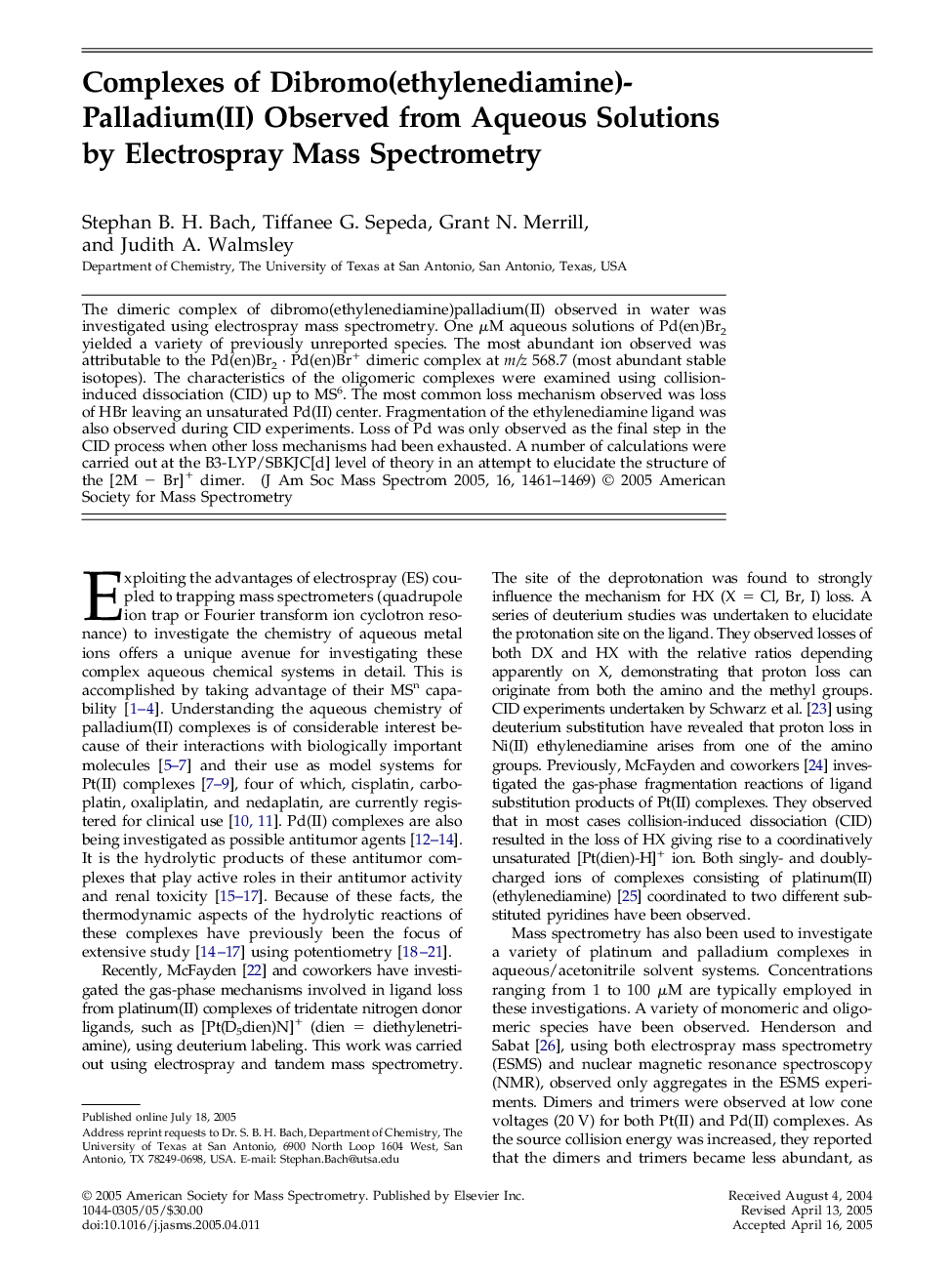| Article ID | Journal | Published Year | Pages | File Type |
|---|---|---|---|---|
| 10546985 | Journal of the American Society for Mass Spectrometry | 2005 | 9 Pages |
Abstract
The dimeric complex of dibromo(ethylenediamine)palladium(II) observed in water was investigated using electrospray mass spectrometry. One μM aqueous solutions of Pd(en)Br2 yielded a variety of previously unreported species. The most abundant ion observed was attributable to the Pd(en)Br2 · Pd(en)Br+ dimeric complex at m/z 568.7 (most abundant stable isotopes). The characteristics of the oligomeric complexes were examined using collision-induced dissociation (CID) up to MS6. The most common loss mechanism observed was loss of HBr leaving an unsaturated Pd(II) center. Fragmentation of the ethylenediamine ligand was also observed during CID experiments. Loss of Pd was only observed as the final step in the CID process when other loss mechanisms had been exhausted. A number of calculations were carried out at the B3-LYP/SBKJC[d] level of theory in an attempt to elucidate the structure of the [2M â Br]+ dimer.
Related Topics
Physical Sciences and Engineering
Chemistry
Analytical Chemistry
Authors
Stephan B.H. Bach, Tiffanee G. Sepeda, Grant N. Merrill, Judith A. Walmsley,
